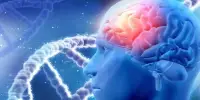Dreams are extremely subjective experiences, with emotional content impacted by a range of elements such as a person’s life experiences, personality, and current emotional state. Why do we fantasize? Dreaming is a complicated experience that can take on numerous emotional tones and simulate reality to varying degrees. It is a consequence of our brain’s neurophysiology. As a result, there is no definitive solution to this question.
The dreams of two forager populations in Tanzania and the Democratic Republic of the Congo were compared to those of individuals living in Europe and North America in a study led by the universities of Geneva (UNIGE) and Toronto, as well as the Geneva University Hospitals (HUG). It was discovered that the first two groups created more scary dreams, but also more cathartic and socially oriented dreams, than the Western groups. These findings, which will be published in Scientific Reports, demonstrate the strength of the links between the socio-cultural environment and the function of dreams.
Dreaming is a hallucinogenic experience shared by all humans. It usually happens during the paradoxical phase of sleep known as Rapid Eye Movement (REM). It can, however, happen at any stage of sleep. What physiological, emotional, and cultural functions do dreams serve? Does it influence our emotions? Is it preparing us for a specific situation? According to recent hypotheses, during a ”functional” dream, the individual replicates more dangerous and/or social settings, which has an evolutionary advantage in fostering adaptive behavior to real-life scenarios.
The social relationships among the BaYaka and Hadza are, by necessity, extraordinarily strong. In comparison to more individualist civilizations in Europe and North America, daily life and labor divisions are often more equal.
David Samson
The outcome of dreams differs depending on the environment and the population studied
To put these theories to the test, researchers from UNIGE and the University of Toronto compared the content of dreams of the BaYaka in the Democratic Republic of the Congo and the Hadza in Tanzania – two communities whose way of life is similar to that of our hunter-gatherer ancestors – with that of different groups of people in Europe and North America (Switzerland, Belgium, Canada), including healthy participants and patients with psychiatric disorders. Dream narratives for the BaYaka and Hadza were collected in the field by anthropologists from the University of Toronto over a two-month period. The data on Western cultures’ dreams originated from previous studies published between 2014 and 2022.
”We observed that the BaYaka and Hadza’s dreams are quite lively. Unlike the situations observed in the Western groups, they frequently begin with a dangerous circumstance in which life is threatened, but end up staging a means of coping with this threat. In therapeutic groups, however, such as individuals suffering from nightmares or social anxiety, the dreams are powerful but lack a cathartic emotional closure. The adaptive function of dreaming appears to be deficient in these latter groups,” explains Lampros Perogamvros, a privat-docent and group leader in the Departments of Psychiatry and Basic Neurosciences at the UNIGE Faculty of Medicine, and an attending physician at the HUG Center for Sleep Medicine, who led the study.

A mirror of the social fabric
Among the responses available to indigenous people when faced with a threat in their dreams, the researchers found that those linked to social support were very frequent. This is the case, for example, when an indigenous person reports a dream in which he is hit by a buffalo in the middle of the bush, only to be rescued by a member of his community. Or when another dreams that he falls into a well and one of his friends helps him out. These dreams contain their own emotional resolution.’
”The social relationships among the BaYaka and Hadza are, by necessity, extraordinarily strong. In comparison to more individualist civilizations in Europe and North America, daily life and labor divisions are often more equal. This type of social connection and reliance on community appears to imply that the best method they understand the emotional content connected with threat in their dreams is through their social interactions. In essence, these relationships serve as emotional instruments for dealing with life’s obstacles,” says David Samson, Associate Professor of Evolutionary Anthropology at the University of Toronto, Mississauga, and the study’s first author.
The research team therefore suggests that there is a close connection between the function of dreams and the societal norms and values of each specific society studied.
”However, in this study, it is impossible to draw any causative linkages between dreams and daytime functioning. ‘We should not conclude that dreams in groups of Western people have no emotional function,” adds Lampros Perogamvros. In fact, the same research team conducted a study in 2019 demonstrating that ”bad dreams,” i.e. dreams with negative content but not nightmares, are frequently simulations of our worries that prepare us to face them once we are awake. ”It appears that there are several types of ‘functional’ dreams. The current study demonstrates a strong link between our socio-cultural lives and the function of dreams,” the researcher says.
















